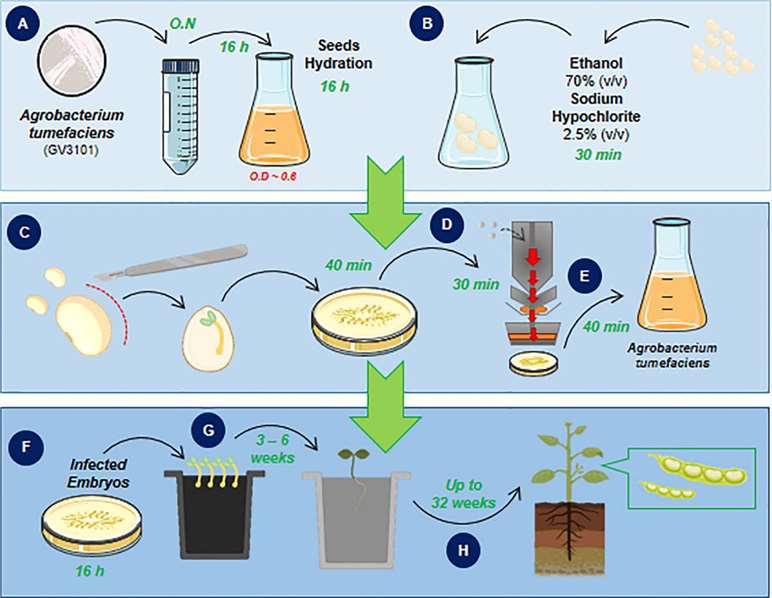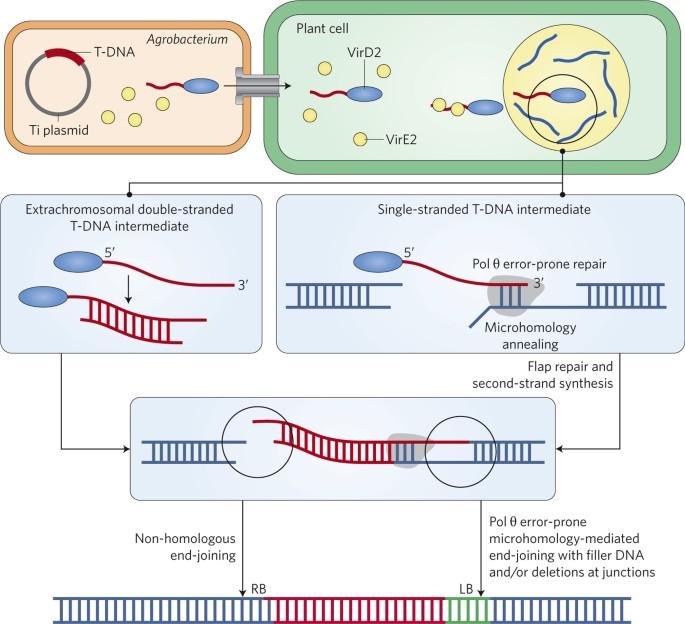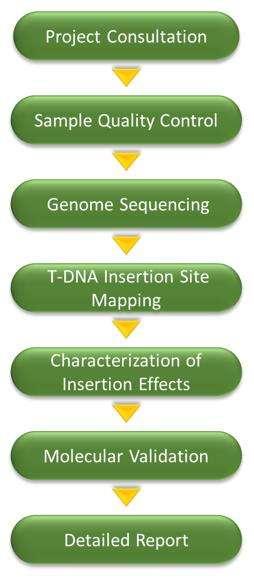What is Agrobacterium-Mediated Plant Transformation?
Agrobacterium, a soil-dwelling bacterium, can chemotactically infect a wide array of dicotyledonous plants. Exploiting wounded areas of the plant, Agrobacterium induces the formation of crown gall tumors or hairy roots. Within Agrobacterium‘s Ti and Ri plasmids resides a crucial fragment of transfer DNA known as T-DNA. This T-DNA has the remarkable capability to integrate into the plant genome, facilitating the introduction of foreign genes. Consequently, Agrobacterium emerges as a natural and versatile tool for effecting plant transformation.
The Agrobacterium transformation method stands as a pivotal tool in the realm of plant genetic engineering and breeding. By judiciously pairing plant tissues with compatible Agrobacterium strains and integrating genetic modification, along with techniques such as tissue culture and transgenic selection, the genetic transformation of diverse plant species becomes attainable. This approach serves as a potent means of enhancing plant traits and cultivating novel varieties.

Agrobacterium-mediated protocols. (Paes de Melo et al., 2020)
Introduction to T-DNA Insertion Technology
Situated in the virulence region of the Agrobacterium Ti plasmid, T-DNA encompasses the genetic code for the majority of bacterial virulence proteins. The process of T-DNA integration into the plant genome unfolds through a series of precise steps. These steps involve the bacterium attaching to the plant cell, triggering the expression of the virulence region, exporting the T-DNA into the host cell, and culminating in nuclear import, intranuclear transport, and integration of the T-DNA. This orchestrated sequence illustrates Agrobacterium‘s adept manipulation of cellular mechanisms to achieve the transformation of plant genes.
T-DNA insertion stands as a pivotal technique for gene knockout and exploring plant gene functionality. Originating from the Ti plasmid of Agrobacterium rhizogenes, T-DNA fragments play a crucial role in transferring genetic material from bacteria to the host plant genome during plant genetic transformation. The advent of next-generation sequencing (NGS) and long-read sequencing has ushered in a new era, revolutionizing the analysis of strains with complex T-DNA insertions.

Pol θ-mediated T-DNA integration. (Levy et al., 2016)
T-DNA Insertion Analysis Services by CD Genomics
CD Genomics offers an expedited, comprehensive, and cost-effective T-DNA insertion analysis service, aiming to transform the understanding and application of genetic modifications in crop species. Our service is tailored to pinpoint T-DNA insertion sites and assess any potential structural alterations, such as rearrangements or duplications linked to the insertion.
Please refer to our T-DNA Insertion Analysis for more information. We are fully dedicated to employing state-of-the-art sequencing technology for driving innovation and make significant contributions to agricultural research and crop improvement.

T-DNA Insertion Analysis – CD Genomics
Key Service Advantages
- Characterization of T-DNA Integration Events
Sequencing unveils detailed insights into T-DNA insertion events, encompassing orientation, copy number, and potential rearrangements within the host genome. This information aids in comprehending the structure and composition of integration events.
- Identification of Precise Insertion Sites
Accurate identification of T-DNA insertion sites within the plant genome is paramount for understanding genetic changes and potential effects on neighboring genes.
- Genome-wide Analysis
Our comprehensive analysis spans the entire plant genome, facilitating the identification of multiple insertion sites and unveiling patterns of T-DNA integration, including potential hotspots.
- Genomic Background Assessment
Through the analysis of sequencing data, a detailed study of the genomic context surrounding a T-DNA insertion site becomes possible. This includes neighboring genes, regulatory elements, and potential impacts on gene expression and phenotype.
- Functional Analysis of Gene Disruption or Activation
T-DNA insertion analysis provides valuable insights into the functional consequences of gene disruption or activation, offering a deeper understanding of their roles in biological processes and pathways.
- Mutant Resource Development
Sequencing-based T-DNA insertion analysis enables the identification of T-DNA insertion mutants, presenting a valuable resource for functional genomics research and facilitating the exploration of gene function and phenotype.
- Improvement of Transformation Technologies
We assist in the evaluation and optimization of T-DNA delivery methods and transformation protocols. This helps uncover patterns and preferences in T-DNA integration, paving the way for the development of more effective and targeted transformation technologies.
Conclusion
With CD Genomics’ T-DNA insertion analysis service, you can gain a profound understanding of the genetic modifications within plant genomes, expediting the process of crop improvement and precision breeding. Committed to employing cutting-edge sequencing technologies, we strive to make significant contributions to agricultural research and crop enhancement. Choose CD Genomics for technological innovation and optimal solutions for your research endeavors.
References
- Paes de Melo, Bruno, et al. “Soybean embryonic axis transformation: combining biolistic and Agrobacterium-mediated protocols to overcome typical complications of in vitro plant regeneration.” Frontiers in plant science 11 (2020): 1228.
- Levy, Avraham A. “T-DNA integration: Pol θ controls T-DNA integration.” Nature plants 2.11 (2016): 1-2.


 Sample Submission Guidelines
Sample Submission Guidelines